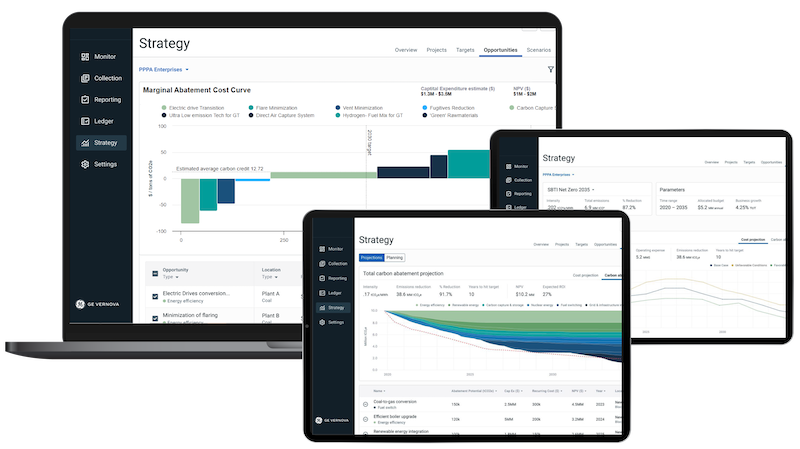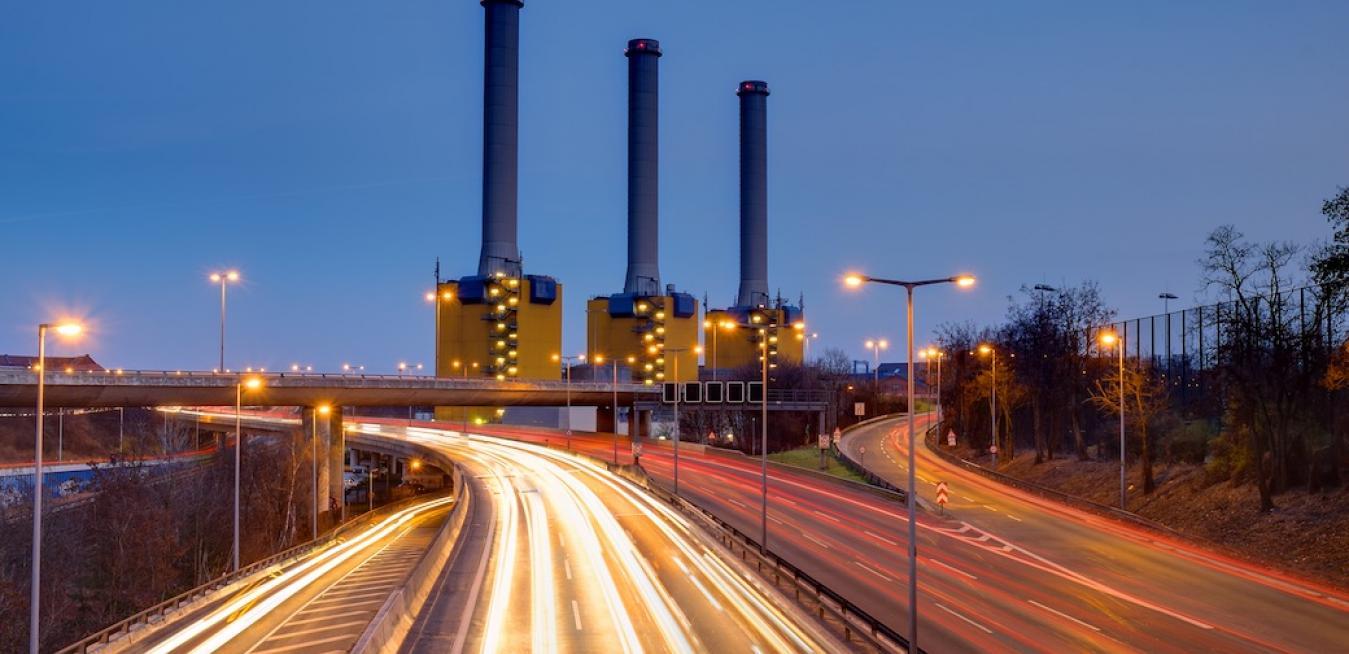According to the Paris Agreement, the world must cut emissions by roughly 45% by 2030 and reach net zero by 2050 in order to stay below 1.5 degrees Celsius of global warming. This is a tall order in a very short amount of time — and countries around the world are setting ambitious targets to cut greenhouse gas emissions (GHG) and bring them as close to zero as possible.
To achieve these critical goals, the energy industry must play a vital role in driving decarbonization across the sector — but first it needs to understand and measure where these emissions are coming from in the first place. Relying on estimates simply isn’t enough any longer; modern digital software is essential in order to accurately report and measure emissions data.
GE Vernova’s Digital business has developed a carbon emissions management software solution designed to help its energy customers obtain more accurate emissions data and help identify areas to reduce carbon emissions, while also developing strategic decarbonization plans. The software is engineered to automate the collection and reporting of emissions data for energy producers, simplifying what can be a manually painstaking process.
These insights help energy companies to better understand their current carbon emission output — a necessary first step in making their existing processes more efficient, and ultimately using that data to lay out achievable plans to reduce greenhouse gases.
The software, called CERius, is not just a spreadsheet killer. It is equipped with artificial intelligence (AI) that can offer energy producers deep insights into both their direct and indirect emissions, enabling the sector to plot a route to net zero.
“This technology will help the energy sector, especially the hard-to-abate industries, identify where and when are the best opportunities to apply those abatement strategies and spend money most effectively,” says Greg Urban, a Boston-based senior director of product management at GE Vernova’s Digital business who has almost 25 years of experience building software for industry and business. “They might say, ‘OK, we can deploy carbon capture technology on these four plants, and it’s going to have X effect.”
“CERius is designed to allow customers to obtain more accurate data from direct and indirect emissions, essentially across Scope 1, 2, and 3. This allows customers to get away from estimates and understand the specific emissions that are coming from owned equipment directly or indirectly, including purchased energy usage or supply chain, on a timelier basis,” says Urban. He outlines one potential benefit for an energy operator with a large fleet of assets that is still estimating its total emissions: “They’d get the ability to track and measure the entire fleet by using reconciliation algorithms and digital twin technology — powered by machine learning and data analytics — to pinpoint with precision in real time which individual turbine is lowest-emitting and delivers insights to analyze further. They could then use those findings to help make all the others just as efficient as the best performer.”
This software was designed to boost the accuracy of calculations of Scope 1 emissions from gas turbines by up to 33%. (Scope 1 emissions come from owned or controlled sources.) The automated precision and AI-derived insights also free up and add value to thousands of hours of time, allowing teams of engineers to concentrate on the overarching decarbonization mission, rather than the time-consuming task of data collection and verification.
And the software has quite the pedigree already in this space: GE Vernova’s engineers in Greenville, South Carolina, one of the world’s toughest turbine validation facilities, used their digital software and original equipment manufacturer expertise to help develop CERius alongside software engineers from GE Vernova’s Digital business.
Policy a Catalyst
Energy producers are anxious to improve their emissions reporting to meet expectations from a variety of stakeholders, including investors, employees, and governments. In Europe, the Corporate Sustainability Reporting Directive will require companies to report with machine-readable text for data tagging. Corporations around the world are setting targets to lower emissions or reach a specific carbon-neutral goal. And in the U.S., the SEC is expected to finalize climate disclosure rules. Trillions of dollars are needed to transform the global economy to achieve the Paris Agreement targets in the next six years, and policymakers and investors are eager to allocate that capital as efficiently as possible. To do so, they need regular and reliable climate risk disclosures provided by accurate data-based digital solutions.

The financial sector also requires rock-solid numbers as it builds sophisticated instruments that can incentivize sustainable business practices and accelerate decarbonization. “Businesses are taking an accounting-style approach to their sustainability reporting,” says Urban. “The quality, accuracy, and timeliness of data is more important than ever in investment decisions.”
Despite this, many energy producers still rely on manual processes and guesswork when calculating their Scope 1 GHG emissions. For example, some may have installed sensors in the main emitting points in their power plants, such as the gas turbine stack, which allows for continuous monitoring. But many calculate their Scope 1 emissions as a factor of the energy consumption numbers printed on their wholesale bills, input the data into spreadsheets, and send the files on to regulators.
That method will no longer cut it, and not just because it’s prone to inaccuracies. Urban explains that the regulatory workload for producers has “exploded” in recent years, partly because of the increasing number of national, regional, and industry-specific bodies that demand detailed disclosures. “It’s been just exponential,” he says. “Our customers need to automate to keep monitoring data — not only to submit accurate data by way of regulation, but also to pave a way for decarbonization across the energy sector to meet companies’ net zero goals.”
Delivering Digital Twins in the Energy Sector
Digital twins, which are virtual replicas of a physical operational energy site or facility, are a game-changer for energy producers once they are up and running. Energy companies can gain access to a simulated real-time environment that can be used for many purposes, including fine-tuning operational efficiency. Gone are the guesstimates of emissions from utility bills. In their place are calculations derived from countless empirical data points. It’s a bit like replacing a blurry analog TV picture with a razor-sharp image made up of millions of tiny, crystal-clear pixels.
That was exactly the mission of GE Vernova’s Digital engineers in Greenville who put real turbines through their paces on the test stands. “We took the data about various operating situations and correlated that data with the emissions levels,” explains Urban. Having hard numbers about the exact emissions level for any given operating situation allowed them to build digital twins for their assets.
In the longer term, CERius can be a boon for companies working across the spectrum of the energy sector, with hard-to-abate industries benefiting the most from reducing emissions.
There is no doubt that digital software can be a game changer and key enabler to accelerate the energy transition at the speed and scale required. Having not only a single platform to collect data but a strategic planning tool will be critical in helping energy companies move to a more decarbonized future.
